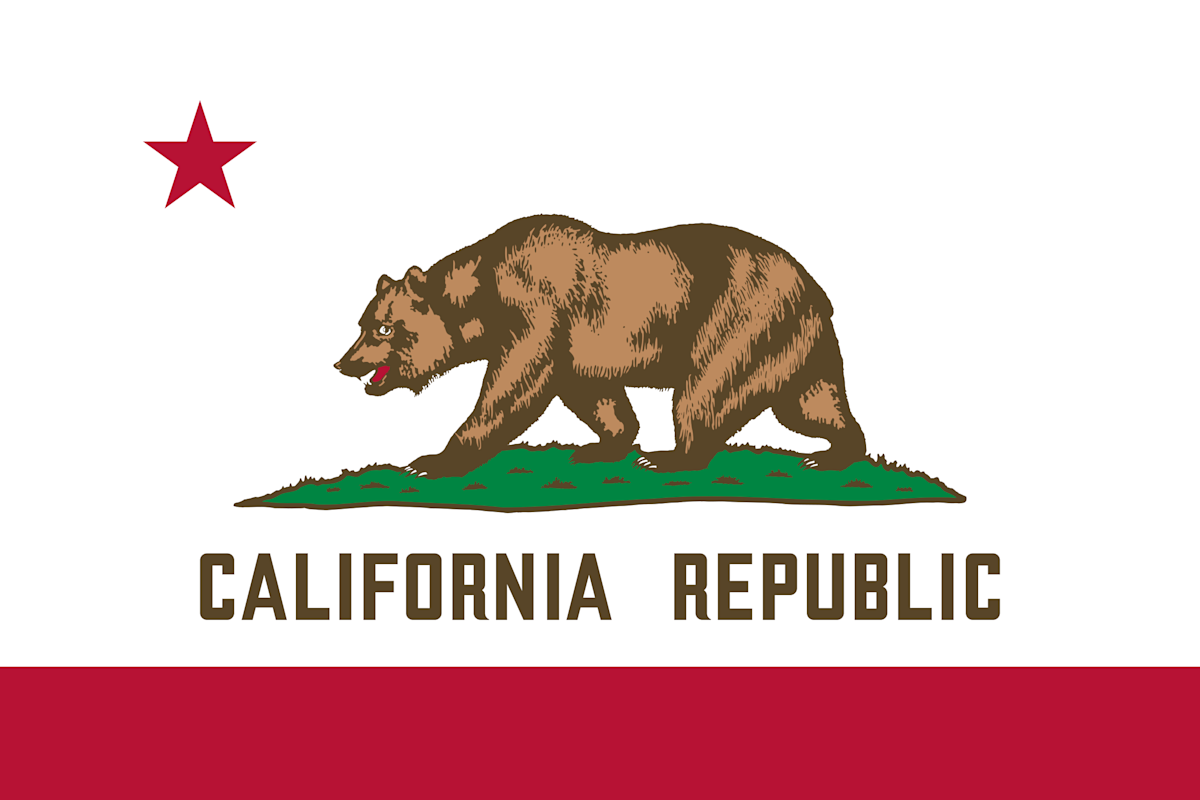California Divorce Laws

Divorce is notoriously challenging to navigate because there is so much information and different rules from state to state. However, it doesn’t have to be a daunting process, and many of the forms you need to begin the process are offered online. You can ease a lot of anxiety in advance by researching the forms that will be required and how much you should expect to pay, whether you file on your own or with the assistance of an attorney.
How to File for Divorce in California
Before you file for divorce in California, decide how you want to file. Filing without an attorney is cost-effective if your case is simple and you and your spouse don’t share children. However, if your case is more complicated or involves children, it may be beneficial to seek legal counsel. Reaching an agreement with your spouse before you start filing can expedite the process, so you can receive your final judgment and move on after the six-month waiting period. If it’s a contentious separation, having a paralegal or attorney file on your behalf can be the best option to minimize potential disputes.
Meet Residency Requirements
The first step to filing for divorce is to make sure you meet the California residency requirement, which states that you or your partner must have lived in California for the past six months and in your current California county for the past three months. For same-sex couples, the residency requirement is different. If you married in California but have since moved somewhere that doesn’t allow divorces for same-sex couples, you can file for divorce in the county you married. Be advised that while the court can end your marriage, they may not be able to determine property division, alimony, or child support, so it’s recommended to confer with an attorney.
File Petition for Dissolution of Marriage
The petitioner, the person filing the case, will submit a Petition for Dissolution of Marriage. The form asks for basic information about the marriage and the type of orders the petitioner wants the court to make about things like spousal support and property. How you fill out these forms will impact the outcome of your case, so it’s extremely important to fill them out correctly and thoroughly.
Some terms you should be familiar with before filing are community and separate property, date of separation, spousal support, child custody and visitation, and child support. The second piece of paperwork you’ll need to include is a Summons, which notifies the respondent that a court case has been started and they have thirty days to respond. If you and your spouse share children under 18, you’ll also need to fill out a Declaration under the Uniform Child Custody Jurisdiction and Enforcement Act (UCCJEA), which tells the court where the children were born and currently live and if there are any other court cases involving them.
Determine if a Temporary Order is necessary
There are a number of decisions to make regarding divorce, including the location of the children's home, the requirement for financial support, and who will be paying the utility bills or staying at the house. The court may have to decide something right away rather than wait until the divorce is finalized. For a temporary order, you will need to fill out additional forms. In the event that you and your spouse reach an agreement before the court, you may request that the agreement be made into a court order. In this case, you won't have to appear in court.
Serve the Papers
Once you’ve filed the forms, the next step is to share the forms with your spouse or domestic partner through a specific process called serving papers. The case can’t move forward until the other person has received a copy of the petition. Under California law, the petitioner is not allowed to serve the papers directly to their spouse. An adult who isn’t involved in the divorce case can serve divorce papers. You can also use the local sheriff’s office, a licensed process server, or a friend or relative to assist with the process. The server must complete a Proof of Service form and file it with the court to prove they delivered the papers to your spouse. If you don’t know your spouse’s current address or they won’t accept the papers, then your process server will do a substituted service. For more information on substituted service, go here.
Disclose Financial Information
To get a divorce, you must share current information about your finances with your spouse within sixty days after filing papers or responding to a petition, which is called preliminary disclosure. These financial documents don’t get filed with the court. Instead, they’re shared directly with your spouse. Sharing financial information makes it easier to work out an agreement, and the court will look at what you own, owe, earn, and spend.
Before you start the paperwork, gather the necessary financial documents, such as tax returns from the last two years, proof of income for the past two months, and any documents, like mortgage documents, that show what you own and owe. You’ll need to fill out three forms: Declaration of Disclosure, Income and Expense Declaration, and Schedule of Assets and Debts. This information will be used to divide property and debts and determine child and spousal support. Afterward, you’ll file a form with the court to let the judge know you met this requirement. Make two copies for your records and one to give to your spouse.
Propose an Agreement and Negotiate
To finish a divorce, you’ll need to determine how to divide property and debts, if anyone will pay spousal support, and how you will support your children. The fastest way is to work with your spouse to reach an agreement. You can do this over the phone or email or get help from a mediator. If you can’t agree, you can ask the court to decide, which may result in a trial where a judge will decide the issues in your case. If your spouse never filed a response and the two of you don’t have a standing agreement, this is called a default divorce. In the case of a default divorce, you can tell the court in writing what you want without your spouse’s input, which the court will then review.
Waive or Complete Final Declarations of Disclosure
These forms should be done before or when you reach an agreement about property or support. If you and your spouse have kept each other updated on your financial situations, you can agree to waive final disclosure by filing a Stipulation and Waiver of Final Declaration of Disclosure. Follow the same steps you did for the preliminary declarations, but on the Declaration of Disclosure and Declaration Regarding Service of Declaration of Disclosure, you’ll check the “final” boxes.
Obtain a Final Judgment
The final step in a successful marriage dissolution is obtaining a Final Judgment, which contains the court’s final ruling and judgment order that makes the divorce official. You’ll need two envelopes big enough to hold copies of all your forms with enough postage. You’ll address one envelope to you and the other to your spouse. If the court approves your judgment, the Clerk will mail a copy of the Judgment and the Notice of Entry of Judgment. Call your local Clerk to make sure that the court doesn’t require a separate small envelope for the Notice of Entry of Judgment. Once you receive the Notice of Entry of Judgment marked “filed,” your case is complete, and your divorce is official.
How Property is Divided in a California Divorce
California is considered an equitable division state, which usually means a judge will order that the property be split 50/50. Marital assets and debts include everything the couple acquired, both individually and together, during the marriage, such as retirement benefits. Property is considered separate or nonmarital if a spouse owned it before marriage or acquired it as a gift or inheritance, such as assets that the couple defined in a prenuptial agreement.
California Divorce FAQs
How long does a divorce take in California?
Divorce in California takes a minimum of six months because of the required waiting period. The legal separation process is similar but without the 6-month waiting period. The divorce will last as long as necessary for the couple to reach an agreement on the core divorce issues.
How much does a divorce cost in California?
To file the initial divorce paperwork, you’ll pay between $435 and $450 to start your case. However, if you can’t afford the fee, there’s a fee waiver option for the filing fees.
Do you have to determine fault in a California divorce?
California is a no-fault state, meaning either party can seek a divorce without proving fault. The filing spouse only needs to state that the marriage should be dissolved based on “irreconcilable differences.” If the petitioner filed for a divorce because their spouse committed adultery, the court would not consider this fact during the divorce proceedings. While adultery is not a crime in California, it can still impact the divorce process. However, if the infidelity directly impacted any aspect of the divorce and can be proven, a judge could reduce the adulterer’s share of property or alimony.
For example, if a judge determines that a spouse intentionally wasted marital assets on an affair, like paying for their lover’s rent, the court may reduce the adulterer's share of the marital property. If you attempt to demonstrate that that affair impacted your marital assets, you’ll need to provide tangible proof, such as text messages, receipts, etc., for a judge to consider additional financial support.
Can you file for a divorce online in California?
Yes, you can file for divorce online in California. The California court system has an e-filing portal where folks can file any Family Law Case electronically. Tyler Technologies, a private company, is partnered with the California Government to offer a free “Guide and File” online service that provides user-friendly forms preparation. People can prepare their required forms by answering a series of simple interview questions. Once completed, you can print the forms or eFile them.
How long after a divorce can you remarry in California?
To remarry in California, you’ll need to surpass the statutory six-month waiting period and have a copy of your finalized divorce decree with you when you remarry.
Can I get divorced without my spouse present in California?
Yes, as long as you meet the legal requirements for a divorce, you can get divorced without your spouse signing any documents or being present at the hearing.
Can I get a divorce while pregnant in California?
You can start the divorce process while pregnant in California, but state law states that the divorce cannot be finalized until after the baby is born. A paternity test will likely be given by the court in order to make custody and support determinations. The pregnancy should be included in the petition along with a proposed child custody agreement to streamline the divorce process after birth.
Are California divorce records public?
California makes divorce records available to the public unless the court has sealed the records. Any member of the public can access the papers of most divorce cases and can use the state’s public records search engine to locate the desired records.
Legal Resources for Getting a Divorce in California
California has many of the resources you’ll need to start the divorce process available online. If you have questions about the process or the specific forms you’ll need, call your local Clerk. If you’re struggling with safety concerns because of domestic abuse, then there are a multitude of resources at your fingertips to guide you through filing for divorce and staying safe during the six-month waiting period.
Judgment Checklist
While this article is a general guideline for divorce in California, this Judgment Checklist has all the forms a court may require for you to complete your divorce. You can contact your local court clerk’s office to find out if they require any optional forms and check how many envelopes you’ll need to provide when you turn in your forms.
Self-Help Guide
If you’re filing on your own in California, one of the most beneficial resources to help you navigate your court case is the step-by-step guides for following procedure and helping you understand your options going forward. Using the guide, you can get help filling out the paperwork, starting a court case, and even finding a free or low-cost attorney. California also has self-help centers where people can receive legal information and resources without a lawyer.
Domestic Violences Resources
If you have experienced intimate partner violence and need legal aid, most cities or counties have restraining order self-help clinics, shelters, and clinics that help people ask for a restraining order. These clinics or agencies can usually help with domestic violence restraining orders. In cases like sexual assault and stalking, they can also assist with civil harassment cases. To find a local service to help you, you can visit this page to find the right resource and keep yourself safe.
About the Author
Scott Levin is a family law attorney mediator in San Diego California known as the Chief PeaceKeeper™. As the leading divorce mediation lawyer in California, Scott leverages an eclectic background in law, business and finance to aid families through his expertise in family and divorce mediation. Passionate and dedicated to aiding clients resolve conflict outside of court, Scott Levin helps clients amicably divorce in California by working to bring about settlement terms, drafting the marital settlement agreements and filing the court forms. Scott also helps with post-judgment modifications as well as prenuptial and postnuptial marital agreements.

Scott LevinAuthor
Scott Levin is a family law attorney mediator in San Diego California known as the Chief PeaceKeeper™. As the leading divorce mediation lawyer in California, Scott leverages an eclectic background in law, business and finance to aid families through his expertise in family and divorce mediation. Passionate and dedicated to aiding clients resolve conflict outside of court, Scott Levin helps clients amicably divorce in California by working to bring about settlement terms, drafting the marital settlement agreements and filing the court forms. Scott also helps with post-judgment modifications as well as prenuptial and postnuptial marital agreements.




